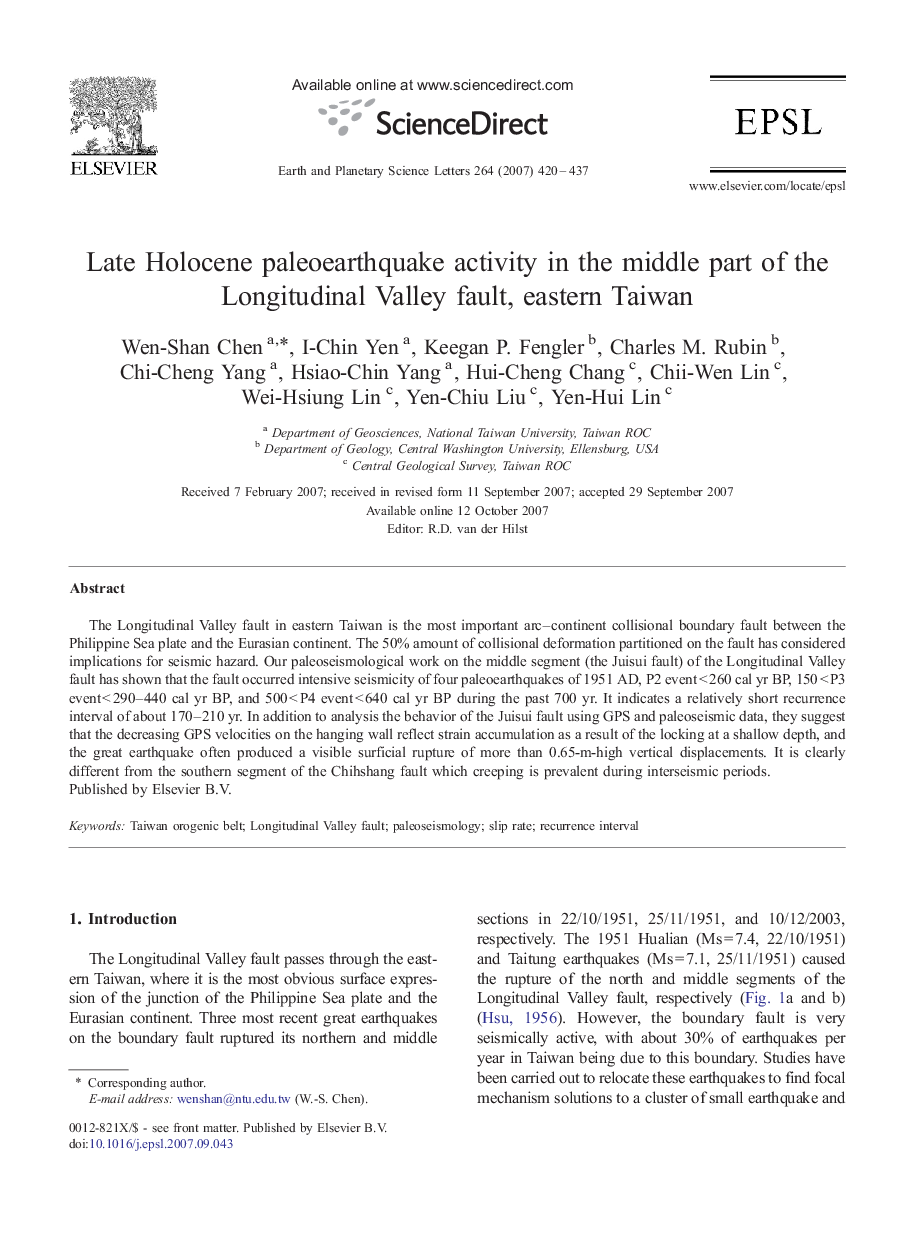| کد مقاله | کد نشریه | سال انتشار | مقاله انگلیسی | نسخه تمام متن |
|---|---|---|---|---|
| 4679736 | 1634906 | 2007 | 18 صفحه PDF | دانلود رایگان |

The Longitudinal Valley fault in eastern Taiwan is the most important arc–continent collisional boundary fault between the Philippine Sea plate and the Eurasian continent. The 50% amount of collisional deformation partitioned on the fault has considered implications for seismic hazard. Our paleoseismological work on the middle segment (the Juisui fault) of the Longitudinal Valley fault has shown that the fault occurred intensive seismicity of four paleoearthquakes of 1951 AD, P2 event < 260 cal yr BP, 150 < P3 event < 290–440 cal yr BP, and 500 < P4 event < 640 cal yr BP during the past 700 yr. It indicates a relatively short recurrence interval of about 170–210 yr. In addition to analysis the behavior of the Juisui fault using GPS and paleoseismic data, they suggest that the decreasing GPS velocities on the hanging wall reflect strain accumulation as a result of the locking at a shallow depth, and the great earthquake often produced a visible surficial rupture of more than 0.65-m-high vertical displacements. It is clearly different from the southern segment of the Chihshang fault which creeping is prevalent during interseismic periods.
Journal: Earth and Planetary Science Letters - Volume 264, Issues 3–4, 30 December 2007, Pages 420–437